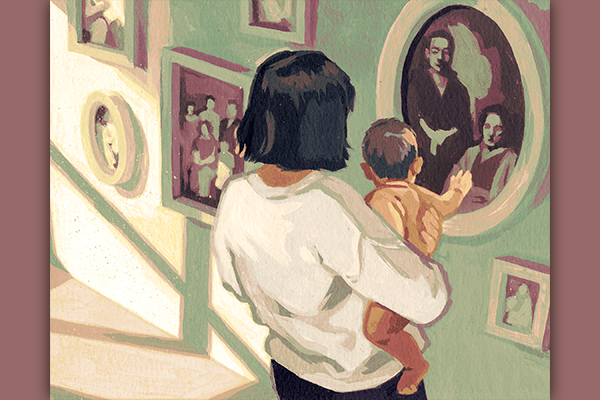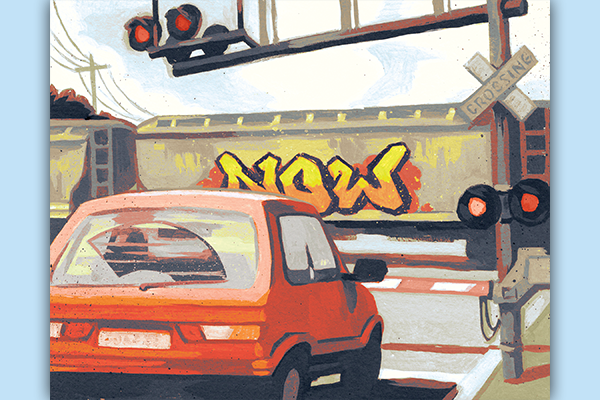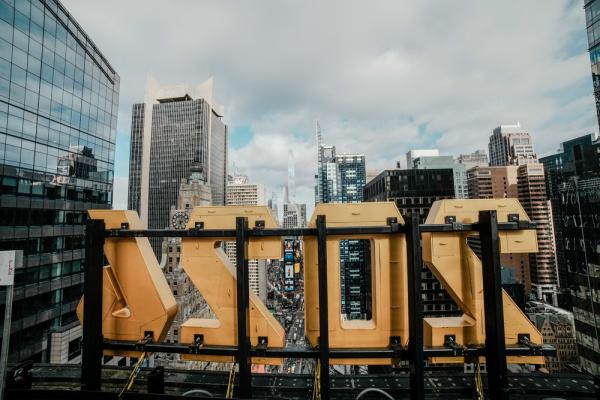I’ll never forget my pastor’s response when I asked about putting a $130 portable ramp in the building where our church meets: “That’s not stewarding tithe well,” he announces without embarrassment. He acts as if he’s making a measured budgetary decision — like he is choosing between two beige paint colors of a similar hue. Except I am the one on eggshells. He acts like this doesn’t determine whether I can access the community gatherings and worship services. He acts like this isn’t personal. But before I can protest his reasoning, before I can explain why this “decision” is personal, he blurts out, “Besides, we don’t have many disabled people anyway.”
When I stress that a ramp isn’t just for me or other wheelchair users, that it can assist folks who use other mobility aids, strollers, or even transport sound equipment, he brushes me off with a quick pat on the shoulder — like I’m a good dog. None of this matters to him because he claims it’s not a good use of the church’s money, all while chomping down on the stale donuts and coffee that the church purchases every Sunday.
It’s clear he wants me to become someone else’s problem, but he adds before walking off: “Maybe your ramp could be a homemade project.” As if this patronizing suggestion is a compromise. It is suspicious to me that the church can purchase everything from candles and Starbucks gift cards, to throw pillows and donuts, yet the church can’t be bothered to make one small accommodation that would allow some disabled people to access the worship space.
Unfortunately, this story is not unique. Many of my disabled friends have similar tales of trying to establish accommodations. These requests for accommodations go beyond ramps and can include sensory lighting, closed captioning, or scent management. But their requests are dismissed with the same excuses: “It’s too expensive” or “It’s too inconvenient.”
The refusal to meet the access needs of disabled folks in church spaces is nothing new. When the Americans with Disabilities Act was signed into law in 1990, it excluded religious communities after some Christian churches lobbied against it, claiming that including disabled people “impos[ed] burdensome costs ... and needless injury to religious exercise.”
Churches were more focused on the cost of inclusion than welcoming us into the community. Message received: We are not worth the cost. Today, many nondisabled Christians act as if excluding disabled folks is a thing of the past. They assure me it’s #NotAllChristians. I hope this is true. And yet, in our current church spaces, disabled people are routinely excluded or forgotten.
A recent study from the Journal of Religion and Health finds that church attendance and participation is substantially lower among disabled people due to lack of access, lack of accommodations, and ableist attitudes. Another study from The Journal for the Scientific Study of Religion found that disabled children were less likely than nondisabled children to attend church. Another survey in The Journal of Disability and Religion revealed only 10 percent of U.S. churches offered any tangible support to disabled people. In short, not only are churches unequipped to welcome disabled people, but it is not even clear whether they have a desire to do so. Many of us continue to wish that this were not the case.
All too often, disabled people are silenced by those around us, or our opinions are not taken into consideration when it comes to discussing equity, accessibility, and other topics related to congregational life. Our disability rights mantra is “Nothing About Us Without Us,” and yet the church has typically made decisions without us.
Whether we want to admit it or not, the truth is that ableism is a core part of church spaces in the U.S. Just like other idols, ableism makes itself invisible to the point that we don’t even recognize it is there. It is so deeply interwoven in the way we gather, worship, and communicate, that rejecting a proposal for a ramp based on convenience and budgetary “reasoning” isn’t an anomaly, it’s the norm.
The good news is this: We can change this narrative of exclusion. We can reject the centrality of ableism in our practices, liturgies, and interpretations of scripture if we organize against conventional understandings of “convenience” and “financial feasibility.” Many of us don’t know where to start when it comes to creating more accessible spaces. Here are five ways to make your church space more inclusive for disabled folks.
- Do an accessibility audit. Does your church welcome disabled people without pity or patronizing remarks? Is your church accessible for those with a diverse range of visible and hidden disabilities and access needs? Do you hide, shame, or belittle disabled people? Do you talk down to us or assume we’re ignorant? A great way to commit to becoming more inclusive when it comes to accessibility is to conduct an Annual Accessibility Audit or hire a disability consultant to assess your church’s accessibility.
- Proactively embrace accommodations without condemnation or critique. Regardless of whether you understand the accommodations or think they are necessary, welcome ideas for how to make your community more accommodating for a variety of visible and hidden disabilities. If you aren’t regularly receiving accommodation requests, don’t assume it’s because your church is already accessible. Accommodations shift over time as access needs change, and those changes should be embraced without complaint. Invite disabled people to take the lead in sharing the best way to meet access needs and equip the rest of the community to follow their lead.
- Unlearn your ableism. Seek out ways to unlearn your ableist language, assumptions, and practices. This is not to shame anyone for unintentional ableism, but it is important to name the harm ableism causes to disabled people, as it can suggest that we are less than bearers of God’s image. Follow #EverydayAbleism. Once you notice ableism, cut it out of your liturgies, song choices, exegesis, gathering practices, and invite other churches to go and do likewise.
- Create a community care network to meet the needs of disabled people. Pay the crip tax! The “crip tax” is the extra costs we pay for being disabled, typically an extra $10,000 – $30,000 in the United States — per year. Help us meet our material needs by bringing dinner, walking the dog, driving us to doctor’s appointments, or helping us make our homes more accessible. Host a garage sale or car wash to pay the crip tax for someone in your community, if they are comfortable with the idea. Community care should be proactive, specific to the needs of the individual, and always done with companionship and collaboration — never pity.
- Learn from the wisdom of disabled people. Read our books, hire us as speakers and trainers, and cultivate a posture of openness when disabled people share our understanding of God and the sacred community. Read the work of Lamar Hardwick, Erica Ramos-Thompson, Rev. Letiah Fraser, Stephanie Tait, Aleja Hertzler-McCain, K. J. Ramsey, Alia Joy, Chloe Specht, and Shannon Dingle. Seek out ways to learn from disabled folks in your community, without defensiveness. We have so much to teach the church about what it means to be human.
Got something to say about what you're reading? We value your feedback!







